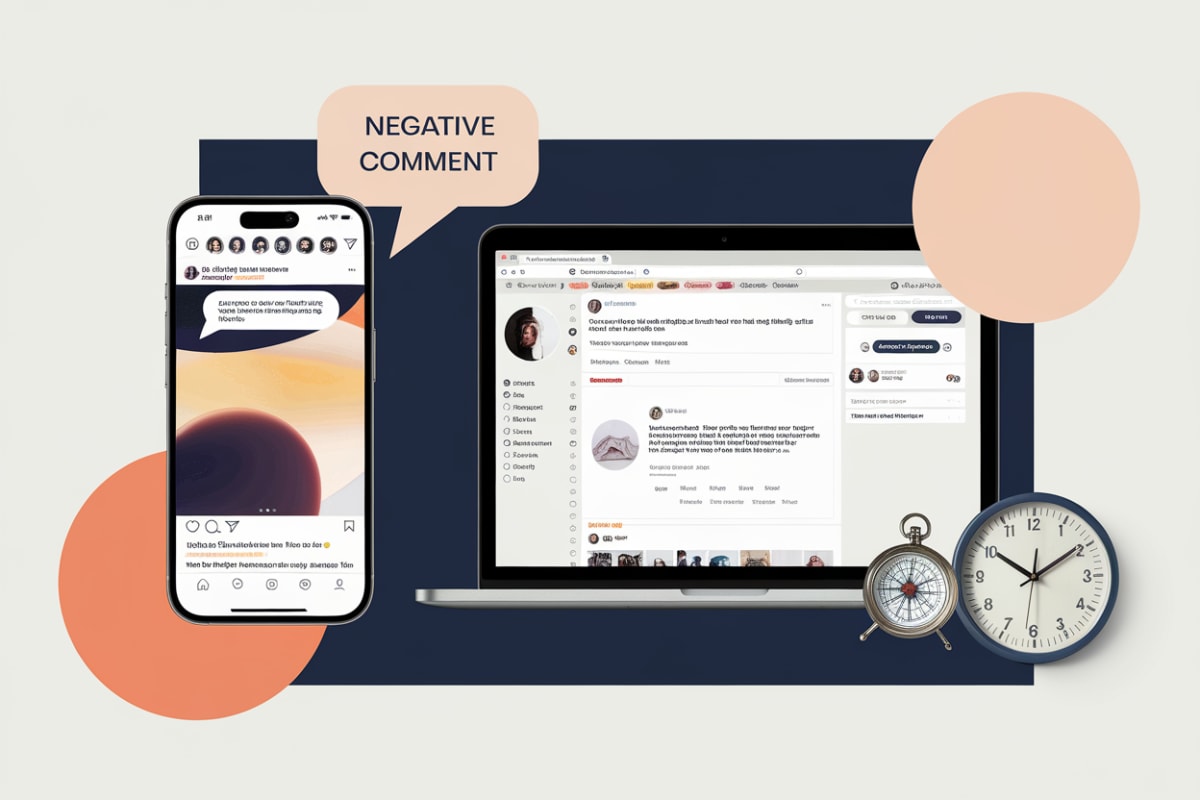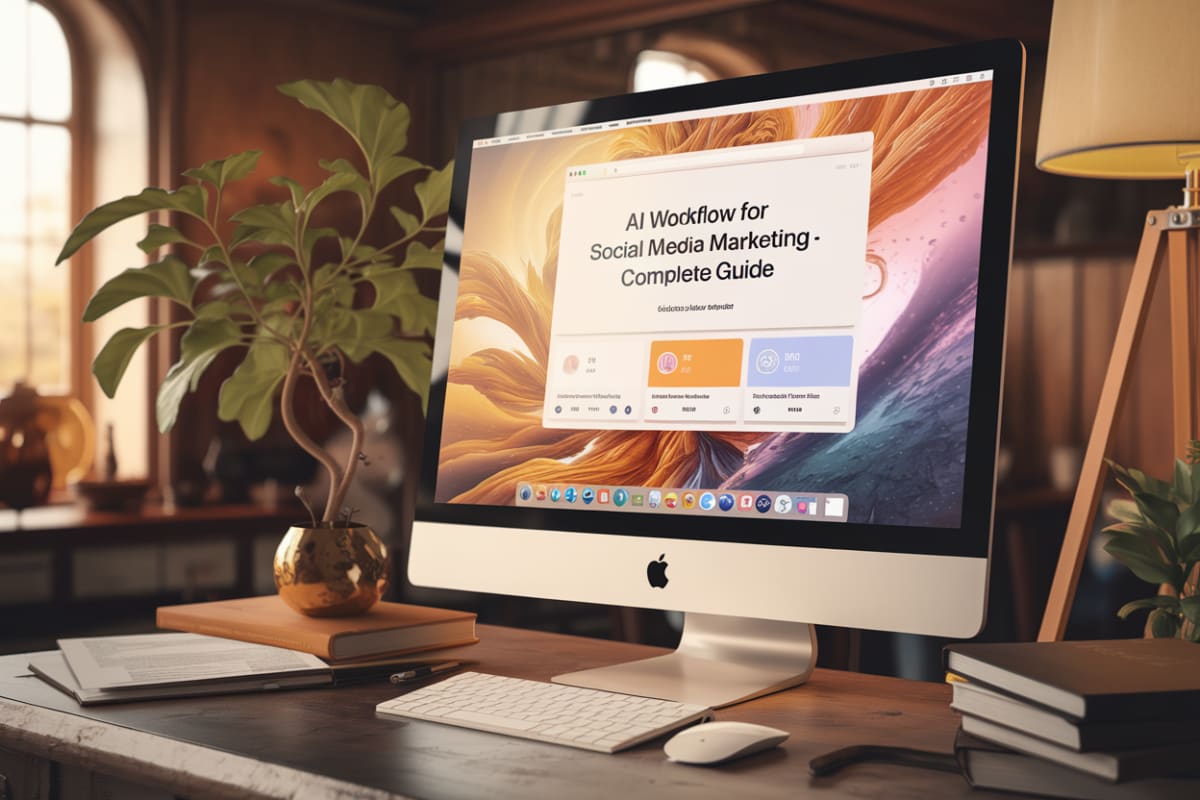How to Handle Negative Comments on Social Media
Strategies for Responding to Negative Comments
1. Pause Before Responding
It’s common to have an immediate emotional reaction to negative comments. Instead of responding right away, take a moment to breathe and reflect on the content and intent of the comment. This pause helps you craft a thoughtful response rather than reacting defensively. Communication expert Matt Abrahams suggests starting with, "Help me understand..." to address hurtful comments productively.
2. Consider the Other Person's Perspective
Understand the motivation behind the negative comment. Often, individuals express frustrations online for reasons unrelated to you. Asking questions like, "Can you help me understand why you feel that way?" opens a constructive dialogue that may lead to mutual understanding.
3. Focus on Constructive Engagement
Positively engaging can defuse negativity. If someone critiques your viewpoint, respond with, "I appreciate your perspective. Can you elaborate on what you disagree with?" This response shows you value their opinion and encourages a more in-depth discussion.
4. Ignore When Necessary
Sometimes, the best course of action is to ignore the comment. Trolls often thrive on attention, and by not engaging, you deprive them of the satisfaction they seek. Alex Terranova shared that after experiencing a barrage of negative comments, ignoring the trolls ultimately benefited his mental state, despite the temptation to engage.
5. Reflect and Adjust
Take time to reflect on the comment and your response. If the comment points out a legitimate issue, view it as an opportunity for growth. If it’s baseless trolling, remind yourself that not every opinion requires a response. Addressing your feelings about the negative comment can also help you move forward without lingering negativity.
6. Encourage Positive Dialogue
Steer conversations towards positivity whenever possible. If a negative comment appears, respond with something positive about your content or invite others to share constructive feedback. This approach fosters a supportive community atmosphere.
7. Utilize Supportive Resources
Engaging with supportive communities or resources provides guidance on handling negativity effectively. Articles and online resources focused on mental health offer strategies for coping with online criticism. Consider embracing tools like Enrich Labs’ AI Social Media Coordinator. This AI teammate moderates and analyzes comments across platforms, ensuring your brand voice remains consistent while saving time and improving overall engagement.
By implementing these strategies, navigate negative comments on social media while maintaining composure and fostering a constructive online environment. The goal is to engage meaningfully, protect your mental health, and contribute positively to online discourse.
Best Practices for Handling Online Criticism
Identify and Prioritize Your Response
Quickly identify significant negative feedback, especially from influential sources. For example, during a recent crisis, Ryanair faced a flood of negative reviews; their failure to respond promptly highlighted the need to address impactful criticism swiftly Brand24.
Maintain a Calm and Professional Tone
Regardless of the criticism's nature, respond professionally. Acknowledge the critic's feelings and offer solutions where possible. Even if an immediate resolution isn’t achievable, showing that you value the feedback fosters goodwill among your audience Brand24.
Use Constructive Feedback for Improvement
Reframe criticism as a learning opportunity, especially in creative fields. Natalie Whittaker, a poetry tutor, explains that constructive criticism helps poets refine their work. She emphasizes separating oneself from the work to view feedback as a growth tool Poetry School.
Engage with Your Community
Building a supportive community cushions against negative criticism. Eric Kim highlights the importance of community engagement and encourages open dialogue about criticism, helping maintain a positive online presence Eric Kim Photography.
Recognize and Counter Bad Faith Tactics
Be aware of online tactics intended to provoke rather than engage in meaningful dialogue. Recognizing these tactics allows you to stay focused and respond appropriately, avoiding defensiveness Adam Kucharski.
Focus on Long-Term Value Over Immediate Reaction
Prioritize long-term goals and the value you provide over impulsive reactions to criticism. Understand that not all criticism deserves a response; sometimes, it’s better to focus on your work and audience’s needs rather than engage in every negative interaction Holly Elmore.
By applying these practices, individuals and organizations navigate online criticism effectively, transforming potentially damaging interactions into opportunities for growth and community building.
Acknowledge and Respond to Negative Feedback
Prompt and professional responses to negative comments are crucial. For example, Ryanair faced 850 negative reviews due to a recent controversy. Instead of ignoring the feedback, they could have addressed the concerns by acknowledging the issues and offering solutions. This proactive approach shows customers that their opinions matter, improving brand perception over time. Engaging with negative feedback instead of avoiding it transforms the interaction into a constructive dialogue that enhances trust Brand24.
Utilize Constructive Criticism
Assess the nature of negative feedback. Constructive criticism aims to help you improve; it is specific and behavior-focused. If a manager says, "Your report lacks clarity," instead of feeling discouraged, ask for specifics on what could be clearer. This turns the comment into a learning opportunity. If the feedback is vague, like "You're not strategic enough," recognize that it lacks actionable insight and focus on seeking clearer guidance. Engaging this way turns unhelpful criticism into a path for personal and professional growth Welcome.
Reframe Negative Experiences
Reframe how you view negative comments to change your emotional response. Instead of viewing feedback as a personal attack, see it as a chance for growth. When facing criticism, assess your feelings and consider small, actionable steps to improve. This approach encourages resilience and keeps you focused on your goals, turning potential setbacks into opportunities for development NeuroLeadership Institute.
Create a Supportive Environment
Encourage a culture where negative comments become opportunities for feedback rather than personal attacks. If team members feel free to share their thoughts openly and constructively, it fosters collaboration and improvement. By focusing on solutions rather than problems, you cultivate a positive environment that naturally turns negative feedback into constructive discussions Rachel Thompson.
Focus on Positive Relationships
Build strong relationships with your audience to cushion the blow of negative feedback. When customers feel valued, they are more likely to overlook minor issues. Frequent engagement through positive interactions creates goodwill, making it easier to navigate negative comments. When customers trust your brand, they are more likely to view negative experiences as isolated incidents rather than a pattern Brand24.
By implementing these strategies, effectively turn negative comments into positive outcomes, enhancing personal growth and brand reputation.
Impact of Negative Comments on Social Media
Deleting negative comments from social media can be a contentious decision, impacting community engagement and brand reputation.
The Case for Deleting Negative Comments
- Control Over Brand Image: Deleting defamatory, misleading, or harmful comments helps maintain a positive brand image. Logan Paul's silence on negative comments after the Aokigahara incident allowed negativity to fester, ultimately harming his public perception Brand24.
- Preventing Misinformation: Negative comments spreading misinformation can mislead your audience. Deleting such comments protects followers from false narratives. Health misinformation on social media spreads quickly, potentially impacting public health decisions WBUR.
The Case Against Deleting Comments
- Opportunity for Engagement: Responding to negative comments can turn a damaging situation into a positive engagement opportunity. Addressing concerns shows you value feedback and are willing to improve. Brands monitoring discussions around popular topics often find that engaging with negative comments clarifies misunderstandings and enhances customer loyalty Brand24.
- Community Building: Deleting comments can alienate your audience. Allowing constructive criticism fosters a community that feels heard and valued. Users often appreciate transparency and responsiveness, enhancing trust and loyalty Marie Claire.
What is the Impact of Ignoring Negative Comments?
Reputation Damage
Ignoring negative comments can significantly harm a business's reputation. Ryanair faced backlash after receiving 850 negative reviews on October 25, 2024, reaching over 5 million users. The airline's failure to respond led to increased negativity on social media, particularly on Twitter, where disgust was prevalent. This lack of engagement suggested to potential customers that the company did not care, driving them away and damaging the brand's image Brand24.
Perception of Indifference
Ignoring criticism can be perceived as indifference toward customer feedback. Customers expect their concerns to be acknowledged. A study highlighted that potential customers are more likely to read reviews and form opinions based on businesses' responses to negative feedback. Ignored complaints can lead to a loss of trust and a belief that the company is unresponsive or negligent Brand24.
Psychological Impact on Employees
Ignoring negative comments, especially in workplace settings, can increase stress and confusion among employees. An article described how a poor performance review left an employee feeling anxious and unclear about expectations, leading to significant distress. The lack of constructive feedback caused the employee to question their career trajectory, showcasing how ignoring feedback harms reputation and individual mental well-being Business Insider.
Encouragement of Toxic Environments
In environments where negative comments are frequent, ignoring them can create a toxic atmosphere. For example, microaggressions in STEM workplaces can lead to feelings of exclusion and burnout among women. When such comments remain unaddressed, they can cause emotional distress and contribute to higher turnover rates as individuals feel undervalued and unsafe AWIS.
Opportunity for Improvement Missed
Ignoring negative feedback means missing out on opportunities for improvement. An SMB attorney shared that by not engaging with negativity, they eventually filtered their social media experience to only positive interactions. This highlights that while some may choose to ignore negativity, it can also lead to a lack of growth and failure to address underlying issues within a business or personal brand X.
How Can Businesses Manage Their Online Reputation?
Conducting Reputation Audits
Businesses manage their online reputation by regularly conducting reputation audits. These audits evaluate a brand's image across various online platforms, including search engines, forums, and social media. AI tools like Enrich Labs' AI Social Media Coordinator streamline this process by collecting data, identifying negative reviews, and benchmarking against competitors. This proactive approach addresses potential risks and enhances visibility online Brand24.
Engaging with Customer Feedback
Proactively monitoring online conversations about the brand is crucial. Social listening tools allow businesses to track positive and negative feedback across social media and review sites. Engaging with customers by responding to reviews promptly mitigates the impact of negative publicity and fosters strong relationships with the audience All Business.
Managing Online Reviews
Businesses should actively manage their online reviews as they significantly influence click-through rates and sales. Research shows that positive reviews can increase traffic by up to 25%. Companies need to encourage satisfied customers to leave reviews and address negative feedback swiftly to maintain a positive reputation WordStream.
Utilizing Google Alerts
Setting up Google Alerts for the business name and relevant keywords helps monitor online mentions effectively. This free tool notifies businesses of new content related to their brand, enabling quick responses to any mentions, whether positive or negative LocalIQ.
Building Positive Content
To counteract negative reviews, businesses should focus on creating and promoting positive content that showcases their strengths. This involves responding to criticism and ensuring the first page of search results contains favorable information about the brand through SEO and content creation Tech Alphonic.
Addressing Negative Content
In cases of negative feedback, addressing the issue directly is essential. This might involve engaging with the reviewer or, in severe cases, seeking legal action against defamatory content. However, maintaining transparency and offering solutions often resolves misunderstandings without escalating the situation Joe Burton.
Monitoring Competitors
Regularly reviewing competitors’ online presence via platforms like the Better Business Bureau (BBB) provides insights into areas for improvement and strategies to enhance one's reputation Small Biz Trends.
What Tools Can Help in Monitoring Social Media Feedback?
Enrich Labs' AI Social Media Coordinator
For a tailored solution, consider Enrich Labs' AI Social Media Coordinator. This innovative tool autonomously moderates and analyzes thousands of comments and DMs across all major platforms 24/7, custom-trained on your unique brand voice and guidelines. By automating these processes, your team can focus on higher-impact work that drives growth while achieving 70%+ cost savings with reliable performance and unique customer insights.
Hootsuite
Hootsuite is a comprehensive tool that allows businesses to monitor social media feedback and gain real-time insights. It integrates analytics from multiple platforms, enabling users to track engagement metrics and analyze audience demographics. The University of Sydney used Hootsuite's analytics to build a consistent social media presence, integrating it with their CMS to track the entire customer journey Hootsuite.
Brandwatch
Brandwatch Listen is designed for real-time monitoring of online conversations about brands, products, and competitors. It analyzes sentiment and trends, alerting users to unusual activity such as spikes in negative comments. Toyota utilized Brandwatch Listen to combine content engagement and social listening, saving time and providing integrated insights across platforms Brandwatch.
ForumScout
ForumScout tracks keyword mentions across various online forums in real time. It helps users stay updated on relevant discussions, making it useful for brand monitoring, industry trend analysis, and competitive research. The platform sends timely alerts, ensuring businesses can engage with content quickly, as 90% of post engagement occurs within the first 24 hours Trend Hunter.
Hootsuite Listening
Hootsuite Listening, powered by Talkwalker, is particularly useful for tracking social media sentiment in political contexts. During the 2024 US presidential campaigns, the tool tracked keywords and sentiment shifts over time, allowing detailed segmentation by demographics, helping brands understand audience reactions more comprehensively Hootsuite.
Conclusion
Handling negative comments on social media requires a strategic approach that balances engagement and mental well-being. By employing effective strategies and utilizing tools like Enrich Labs' AI Social Media Coordinator, businesses can foster a positive online presence while managing criticism constructively.
Ready to enhance your social media management? Learn more about Enrich Labs’ AI Social Media Coordinator today!




